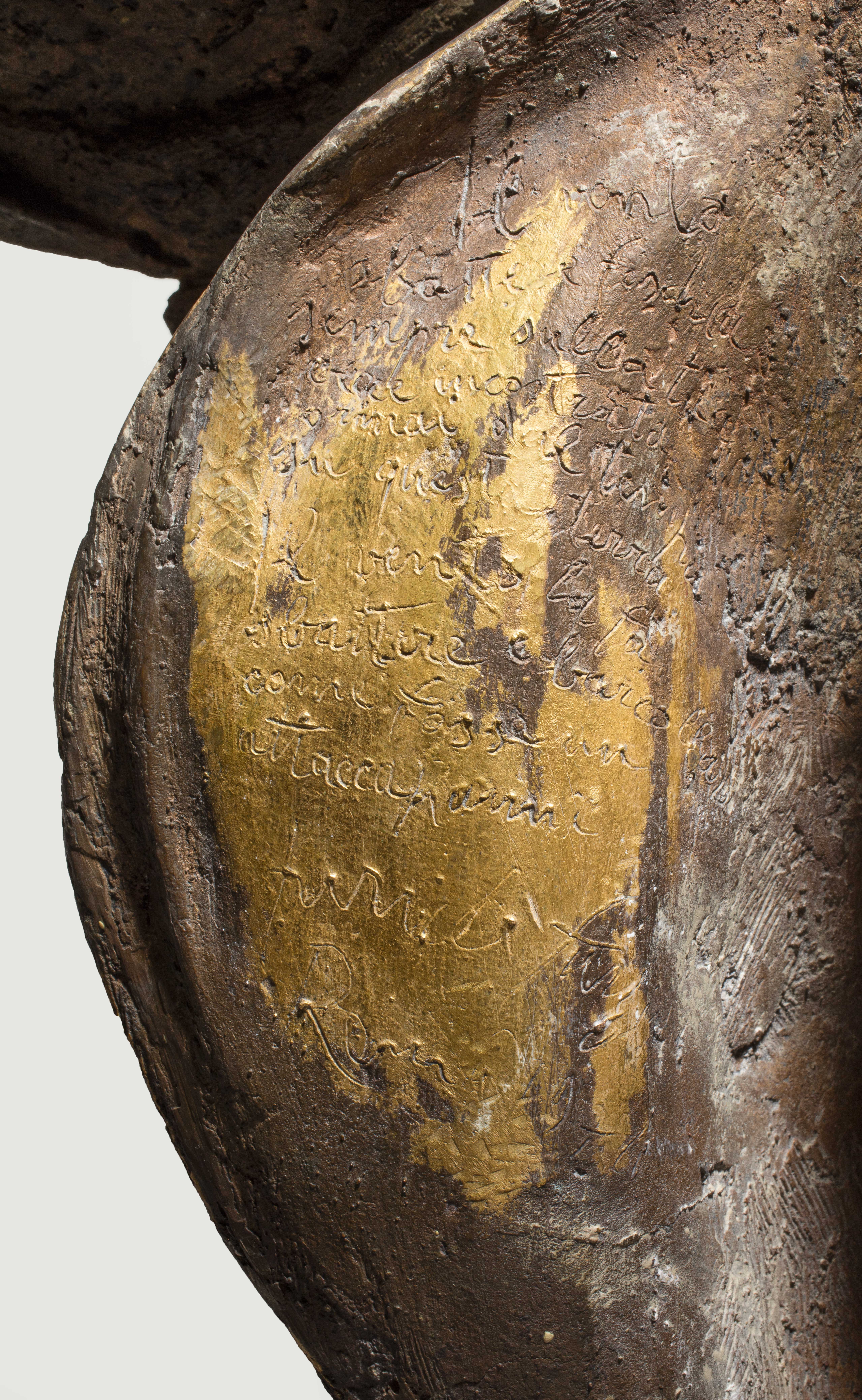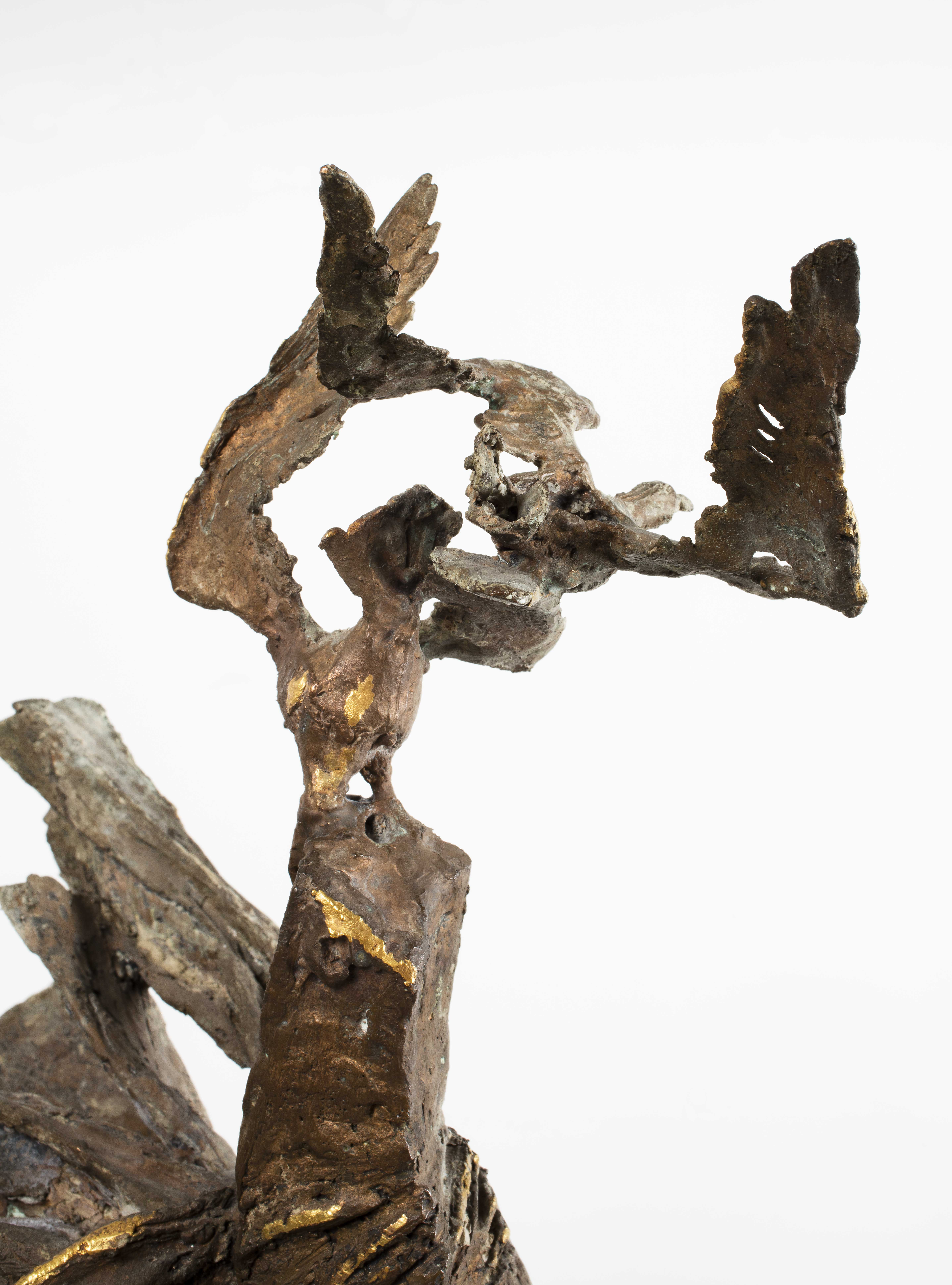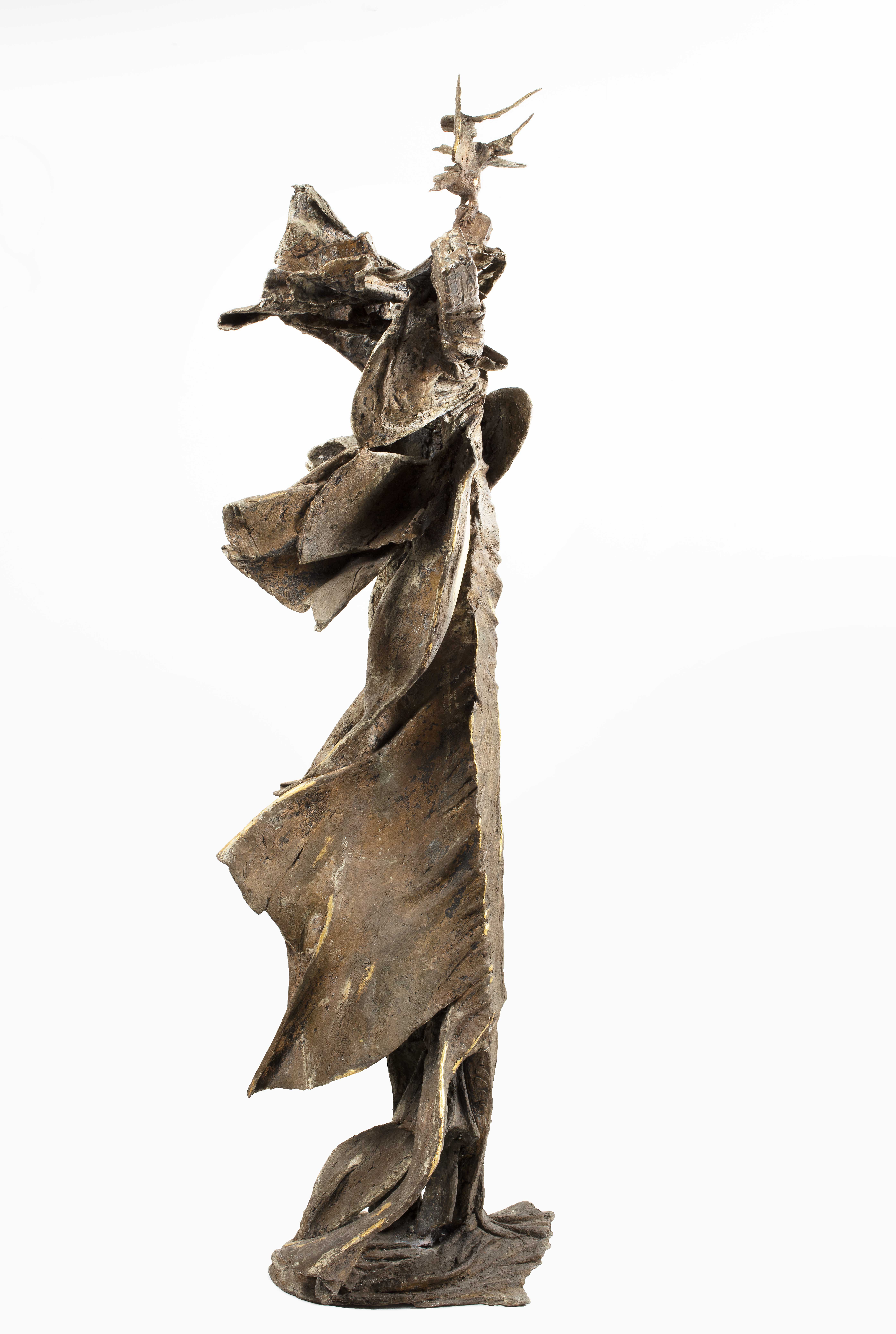Bronze Crucifix by Pericle Fazzini
Artist: Pericle Fazzini
Date: 1974
Classification: Sculpture
Dimensions: 120 x 93 x 31 cm
Materials: Bronze
Adopted By: The Minnesota & North Dakota Chapter
Total Cost: € 11,165
Description
Pericle Fazzini was born on May 4th, 1913 in Grottammare (Marche) where he became interested in sculpture at a very young age. Between 1931 and 1933 he revealed his style remarkably with beautiful works such as the Woman walking on the water (1932), which won him the “pensionato artistico nazionale”. The Portrait of Birolli was another of his debut pieces which, although it was influenced by the teachings of A.Martini, is highly characteristic of Fazzini’s originalityand freshness.
In 1934, he exhibited his work in Paris with Despiau, Bonnard, De Segonzac and Cagli. Afterwards, he participated in all major national exhibitions such as the Venice Biennale, and the Quadrennial of Rome, presenting works such as the Portrait of Ungaretti and the Boy with Seagulls (1940-45 ). During this period, he demonstrated his unsurpassed expertise in working with wood. His standing Portrait of Anita (1939), also made of wood, won him the Turin Award in 1947. In the second half of the 20th century, during the spread of a renewed interest in cubism and abstract art in Italy, Fazzini fully developed his style. His work was created out of his amazing, instinctive nature, and each piece was characterized by a mix of creativity, imagination and unconventionality.
This wonderful cross was completed by Pericle Fazzini in 1974, at the same time as his completion of the Resurrection of Paul VI Hall at the Vatican. Fazzini’s depiction of the cross without Christ, offers his own very personal reflection. The Shroud alone is depicted, blown powerfully against the cross by a strong gust of wind; a small bird miraculously resists, perched atop the cross itself. It is thought that the bird might be a robin, which, according to legend, was the only bird, among the many still in the air when Christ was dying, to stop and remove a thorn from the head of Jesus. A drop of the blood of Christ dampens the feathers of the Robin’s breast, and as a way to remember its act of love, Jesus transformed the robin’s breast to be forever red.
On the back of the cross an inscription reads: “Always, the wind blows and slams against your embedded cross, dominating time in this land. The wind makes to beat and stagger it like a coat hanger. ”
This crucifix represents an advanced stage in a progressive evolution towards formal abstraction in the art of Fazzini, which began in the late fifties. His style is, however, continuously characterized by a constant dramatic tension and dynamism, so often infused into each of his pieces that the poet Giuseppe Ungaretti called him “the sculptor of the wind.” This piece is expected to return on display after a brief time in storage.
State of Preservation
The state of conservation is decent. The entire surface, however, is covered with an oily patina, a deposit of mixed dust and old varnish protectant. Some areas of the sculpture are affected by trace amounts of the products of the decomposition of metal alloy.
Restoration Procedures
- Removal of the protectant and of the products of decomposition of bronze
- Washing and dehydration of the alloy
- Dust suction and micro-dust suction
- Scientific research
- Overall cleaning
- Photographic documentation
Detail
Adopted By:
The Minnesota & North Dakota ChapterInventory N°: 23983
Artist: Pericle Fazzini
Date: 1974
Dimensions: 120 x 93 x 31 cm
Materials: Bronze
Department:
XIX Century and Contemporary ArtCurators:
Dr. Micol Fortimuseum:
Collection of Contemporary ArtWishbook year: 2015
Total Cost
€ 11,165

Bronze Crucifix by Pericle Fazzini

Details
Adopted by: The Minnesota & North Dakota Chapter
Inventory: 23983
Artist: Pericle Fazzini
Date: 1974
Classification: Sculpture
Materials: Bronze
Dimensions: 120 x 93 x 31 cm
Museum: Collection of Contemporary Art
Department: XIX Century and Contemporary Art
Wishbook year: 2015
Description
Pericle Fazzini was born on May 4th, 1913 in Grottammare (Marche) where he became interested in sculpture at a very young age. Between 1931 and 1933 he revealed his style remarkably with beautiful works such as the Woman walking on the water (1932), which won him the “pensionato artistico nazionale”. The Portrait of Birolli was another of his debut pieces which, although it was influenced by the teachings of A.Martini, is highly characteristic of Fazzini’s originalityand freshness.
In 1934, he exhibited his work in Paris with Despiau, Bonnard, De Segonzac and Cagli. Afterwards, he participated in all major national exhibitions such as the Venice Biennale, and the Quadrennial of Rome, presenting works such as the Portrait of Ungaretti and the Boy with Seagulls (1940-45 ). During this period, he demonstrated his unsurpassed expertise in working with wood. His standing Portrait of Anita (1939), also made of wood, won him the Turin Award in 1947. In the second half of the 20th century, during the spread of a renewed interest in cubism and abstract art in Italy, Fazzini fully developed his style. His work was created out of his amazing, instinctive nature, and each piece was characterized by a mix of creativity, imagination and unconventionality.
This wonderful cross was completed by Pericle Fazzini in 1974, at the same time as his completion of the Resurrection of Paul VI Hall at the Vatican. Fazzini’s depiction of the cross without Christ, offers his own very personal reflection. The Shroud alone is depicted, blown powerfully against the cross by a strong gust of wind; a small bird miraculously resists, perched atop the cross itself. It is thought that the bird might be a robin, which, according to legend, was the only bird, among the many still in the air when Christ was dying, to stop and remove a thorn from the head of Jesus. A drop of the blood of Christ dampens the feathers of the Robin’s breast, and as a way to remember its act of love, Jesus transformed the robin’s breast to be forever red.
On the back of the cross an inscription reads: “Always, the wind blows and slams against your embedded cross, dominating time in this land. The wind makes to beat and stagger it like a coat hanger. ”
This crucifix represents an advanced stage in a progressive evolution towards formal abstraction in the art of Fazzini, which began in the late fifties. His style is, however, continuously characterized by a constant dramatic tension and dynamism, so often infused into each of his pieces that the poet Giuseppe Ungaretti called him “the sculptor of the wind.” This piece is expected to return on display after a brief time in storage.
State of Preservation
The state of conservation is decent. The entire surface, however, is covered with an oily patina, a deposit of mixed dust and old varnish protectant. Some areas of the sculpture are affected by trace amounts of the products of the decomposition of metal alloy.
Restoration Procedures
- Removal of the protectant and of the products of decomposition of bronze
- Washing and dehydration of the alloy
- Dust suction and micro-dust suction
- Scientific research
- Overall cleaning
- Photographic documentation
Media

Bronze Crucifix by Pericle Fazzini

Bronze Crucifix by Pericle Fazzini - 1

Bronze Crucifix by Pericle Fazzini - 2

Bronze Crucifix by Pericle Fazzini - 4

© 2025 Patrons of the Arts
in the Vatican Museums
Vatican Museums V-00120,
Vatican City State (Europe)
+39 0669864499
